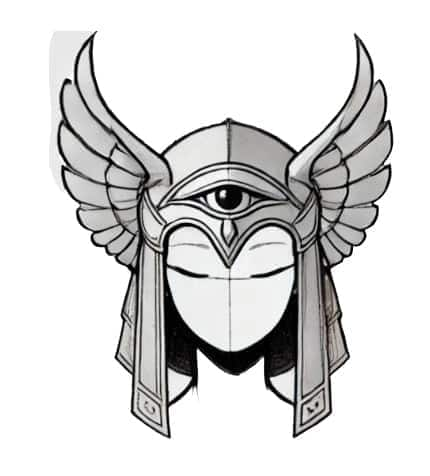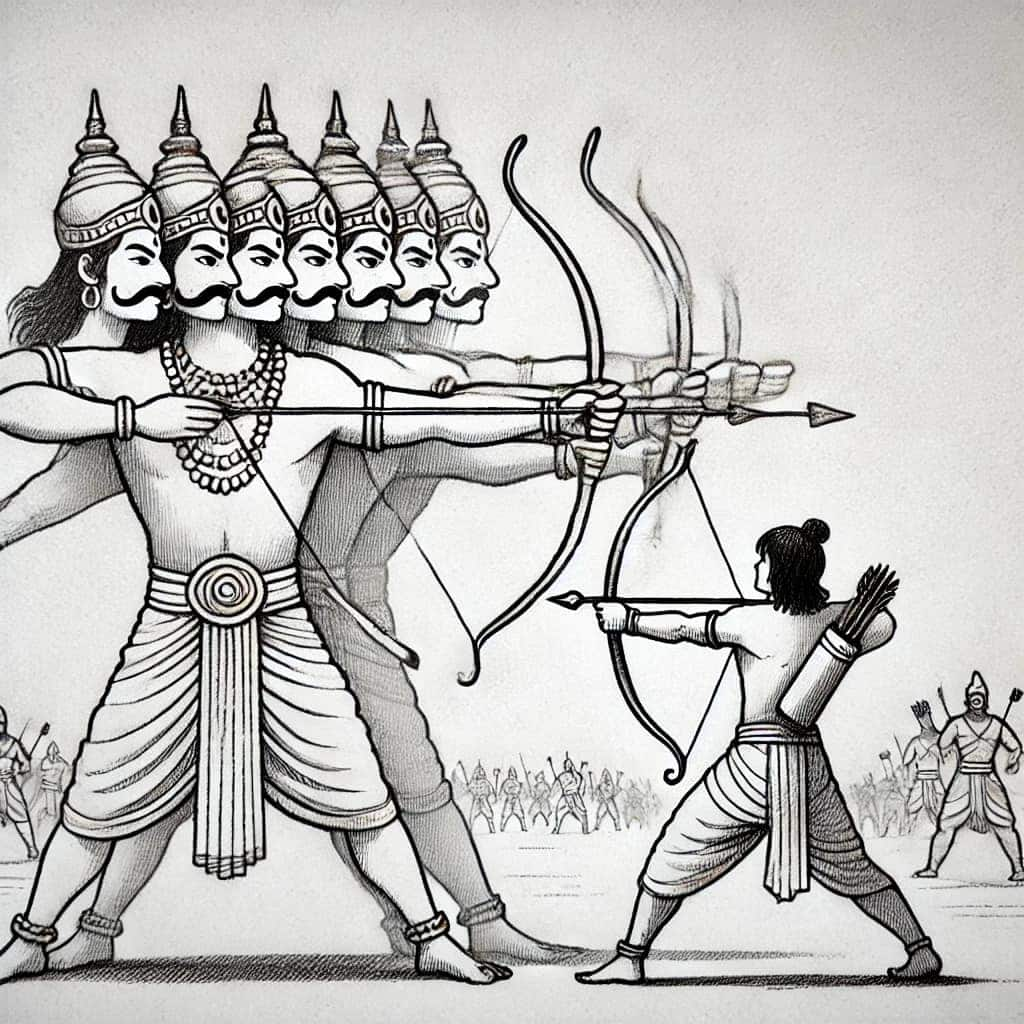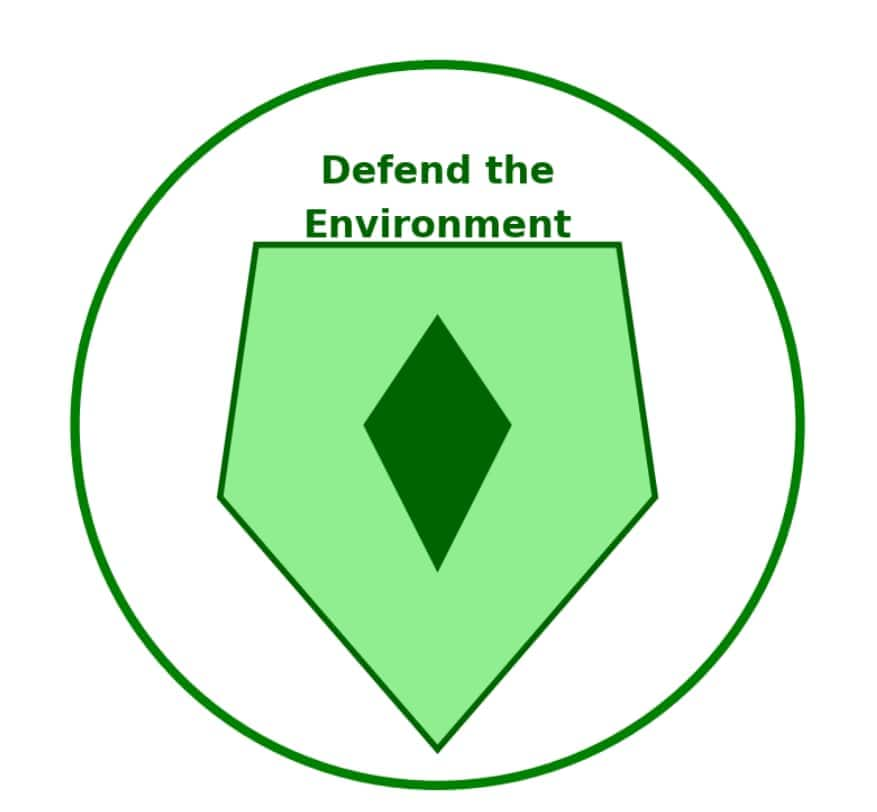UPES B.Des Admissions 2026
Ranked #45 amongst Universities in India by NIRF | Ranked #1 in Academic Reputation in India by QS World University Rankings
For students hoping to enroll in the esteemed National Institute of Fashion Technology, passing the entrance exam is essential. For NIFT Entrance Exam applicants the NIFT Situation Test is an essential component of the test. The written portion, which consists of the General Ability Test (GAT) and the Creative Ability Test (CAT), is followed by this practical assessment. The Situation Test evaluates a candidate's material handling, spatial awareness, and design interpretation abilities while gauging their capacity for both creative and practical thought under time restrictions.
This Story also Contains

Studying the NIFT Situation Test Previous Year Question Paper with Solutions will help NIFT candidates get ready by providing important information about the important topics for NIFT preparation, the grading system, and crucial study techniques.
Students can download the given PDF for an in-depth understanding of the NIFT Situation Test questions.
Title | Download Link |
NIFT Situation Test Previous Year Questions with Solutions |
The NIFT Exam includes a NIFT situation test to assess a candidate's conceptualization and creative skills before admitting them to the design programs. As part of the situation test, aspirants are given some materials, and they have to create a model and accompany it with a caption and a short write-up explaining the 3D model made by the student.
The following factors are used to evaluate the candidates in the NIFT situation test:
Skills in Conceptualization
Innovative thoughts and creative use of the materials supplied
Elements' composition Color scheme
Visual appeal
Methodology of work
Presentation as a whole
Cleanliness
Also Read:
NIFT Situation Test Analysis 2025
Solving NIFT situation test questions is one of the best strategies for preparing for the NIFT Situation Test. This is because the applicant can gain additional benefits in addition to learning about the paper's structure, which includes the kinds of questions asked, the marking system, and the degree of difficulty. NIFT previous year situation test questions are an excellent resource for honing one's time-management and problem-solving skills. To help you prepare for the design entrance exam, we have included NIFT situation test previous year questions
Q1. How will you create a headgear that takes inspiration from any of the following:
A character from mythology
Extraterrestrial creatures of the sea
Aliens
Solution:
Choose a character known for their distinctive headwear (e.g., Loki’s horns, Athena’s helmet, or Anubis’ headdress).
Design Elements:
elaborate metalwork engraved with symbols from mythology.
Embedded gemstones or glowing accents to represent divine power.
A structure that conveys authority, such as towering crests, wings, or animalistic features (horns, serpent shapes, or feathers).
Possible Modifications:
Make It More Egyptian (add a cobra or Anubis-inspired details).
Add More Greek Elements (like a full Corinthian helmet or Olympian crest).
Refine the Sketch (darker shading, more details in engravings).
EXAMS dates- 13-14 Dec | Leading Design College | Highest CTC: ₹12 LPA | Average CTC: ₹7.5 LPA | Scholarships for Deserving Students
Recruiters: Aditya Birla, Wildcraft, Tommy Hilfiger, Vero Moda etc | Only Fashion Institute in India to have entered the LIMCA BOOK OF RECORDS

Q2. How will you be able to conceive a scene for any one of the following options:
Folk tales like the Ramayana
Fairy tales
A tale from the Panchatantra
Solution:
Example Scene: Rama battling Ravana
Composition:
Rama, standing tall with his bow drawn, glowing with divine energy.
Ravana, with his ten heads and twenty arms, wielding weapons.
A dramatic battlefield in Lanka, engulfed in fire and chaos.
Hanuman in the background, leading an army of vanaras.
Celestial lighting emphasizing the divine clash.

Q3. How can you redesign the working environment of the below options:
A tea shop owner
Clinic of a doctor
Seller of fruits and vegetables
Material Provided:
Mount board
Aluminum foil
Needle & thread
Transparent sheet
Pins
Green/blue and red clay
Beads
Color paper thick (Blue and red)
6 Ice cream sticks
6 Long sticks
Cloth
Thick Sheets
Foil paper
Approach:
Concept: A cozy, eco-friendly tea stall with a traditional yet modern touch.
Design Approach:
Thick sheets and mount board provide the stall's framework (counter and canopy).
Aluminum foil can be used as an insulating layer or as decorative accents while storing hot tea.
Transparent Sheet: The stall's window or protective covering.
Ice cream sticks and pins: A structure for menu boards or signs.
Teapots, tea leaf decorations, and cups made of clay (green, blue, and red).
Beads: Used to create hanging ornaments or as decorative pieces.
Cloth: For a comfortable atmosphere, use drapes or seating mats.
Tea packets can be wrapped in foil paper or used as a reflective surface.
Q4. How would you be able to create an indoor games room for a kindergarten or nursery school?
Solution: The aim is to Create an enjoyable and safe environment for young children to participate in creative and physical activities. In order to promote learning via play, the design should emphasize vibrant colors, soft materials, and captivating motifs, especially considering the young age group.
Design Plan:
To make the most of the available space and keep kids interested, divide the area into various activity zones.
Active Play Area (Physical Activities):
Soft play mats for jumping and rolling.
Mini slides and tunnels made from mount board and cloth.
"Follow the Line" paths using color paper and foil paper.
Creative Play Area (Art & Sensory Activities):
Clay modeling section with green, blue, and red clay.
Bead-stringing activities to improve motor skills.
A small stage for puppet shows using cloth and ice cream sticks.
Cognitive Play Area (Puzzles & Learning Games).
DIY puzzles made from thick sheets and mount board.
Memory and sorting games using beads and color paper.
Material | Usage in Indoor Game Room |
Mount Board & Thick Sheets | Walls, play structures, mini furniture |
Aluminum Foil | Reflective elements for a magic mirror game |
Needle & Thread | Stitching soft toys, hanging decorations |
Transparent Sheet | Windows for playhouses, sensory boards |
Pins & Ice Cream Sticks | DIY puzzles, craft activities |
Green/Blue & Red Clay | Hands-on sculpting activities |
Beads | Stringing games, decoration for game pieces |
Color Paper (Blue & Red) | Wall art, learning posters, floor games |
6 Ice Cream Sticks & Long Sticks | Building frames for simple games |
Cloth | Playhouse curtains, soft play mats |
Foil Paper | Shiny decorative elements, textured play materials |
Safety & Design Considerations:
Structures with rounded edges that should be covered with soft cloth.
Non-toxic materials for designs that are kid-friendly.
Simple storage options (cubbies, hanging pouches).
Vibrant, captivating hues to create a fun atmosphere.
Q5. How can you create a wheeled device that a disabled person can use?
Solution:
The aim is to design a straightforward, useful, and assistive mobility aid that guarantees impaired people's comfort, stability, and ease of mobility. Using the materials at hand, we will develop a lightweight, structural contraption that resembles a simple wheelchair.
Key Features:
Stable Base – A strong structure to support weight.
Wheels for Mobility – Smooth movement for easy transport.
Comfortable Seat & Backrest – Provides posture support.
Handles for Assistance – Helps push or maneuver the device.
Steps to Assemble the Device:
Build the Frame & Seat
Use thick sheets & mount board to create a sturdy rectangular base.
Attach long sticks as side supports for stability.
Attach the Wheels
Use ice cream sticks and beads to create small wheels.
If needed, clay can be molded into round shapes for makeshift wheels.
Design the Seat & Backrest
Use cloth & thick sheets to make a soft, cushioned seat.
Attach a slightly reclined backrest for posture support.
Add Push Handles & Stability Features
Attach long sticks as pushing handles for manual movement.
Cover handles with clay for grip.
Use foil paper strips for visibility and safety.
Safety & Design Considerations:
Ensure balance so the device does not tip over.
To avoid damage, make use of rounded, smooth edges.
Lightweight yet strong materials for easy handling.
Final Iterations:
Decorate with color paper for an appealing design.
Add a simple braking system using pins or locks.
Use transparent sheets as a protective layer from dust.
Q6. How to make a flower vase and fill it with original flowers inspired by the topic "Storm."?
Material Provided:
Fabric
Al Wire
Thermocol (9" × 9")
Mount Board
Ivory sheet
Tracing paper
Straws
Needle & thread
Colored sheets in 4 colors – blue, yellow, pink, and red
Cardboard (10" ×10")
All pins
Newspaper
Corrugated sheet
Thermocol balls
Solution: The goal is to design a flower vase and flowers that represent the power, movement, and chaos of a storm while maintaining artistic beauty.
Approach:
To mimic the wind, the vase should seem to be moving, perhaps tilting or spinning.
It should appear as though a storm is tossing the flowers around.
Stormy components, such as dark blues, grays, and whites with touches of lightning-inspired yellow, should be reflected in the color palette.
Materials Needed:
Base: Cardboard (10" × 10") for stability.
Body: Thermocol (9" × 9"), Corrugated Sheet, and Mount Board for structure.
Design Elements:
Fabric & Wire to create a twisted, wind-swept shape.
Newspaper & Ivory Sheet to layer over for texture (like swirling wind).
Tracing Paper cut in jagged shapes for a lightning effect.
Thermocol Balls scattered to represent hail or storm particles.
Process:
Cut & Assemble the Base
Use cardboard as a base and fix thermocol & mount board to form the vase shape.
If you want a twisted look, mold corrugated sheet into a curved structure.
Add Texture & Storm Effects
Cover with fabric & newspaper for a rough, stormy texture.
Attach wire inside the fabric to make it look wind-blown.
Stick tracing paper in sharp shapes to mimic lightning.
Final Touches
Paint in stormy shades (gray, blue, white, and yellow highlights).
Use thermocol balls to create a “hail effect.”
Q7. How will you Construct a Dhaba while keeping the area's culture in mind?
Solution:
1. Architectural Design & Ambience
Use mud walls, bamboo, thatched roofs, and wooden furniture to create a rustic look.
Add charpais (woven cots) for seating, which is a staple in traditional Indian Dhabas.
Use terracotta pots, earthen lamps, and hand-painted walls showcasing regional art and motifs.
Ensure an open-air or semi-open setting to reflect the roadside dhaba culture.
2. Local Cuisine & Menu
Incorporate traditional dishes unique to the region.
Punjab: Makki di Roti & Sarson da Saag, Lassi, Dal Makhani.
Rajasthan: Dal Baati Churma, Gatte ki Sabzi.
Bihar: Litti Chokha, Sattu Paratha.
West Bengal: Shorshe Maach, Kosha Mangsho.
For a more genuine look, serve food using utensils made of clay, copper, or brass.
Serve seasonal fare influenced by regional celebrations and customs.
3. Cultural Decor & Wall Art
Make use of signboards that are hand-painted with folk art and native script (such as Madhubani, Warli, and Phad).
Hang posters of local folk heroes, Bollywood classics, or vintage trucks.
4. Staff Attire & Hospitality
Dress staff in traditional attire like kurta-pajama, dhoti, (turban), or sarees based on the region.
Encourage warm hospitality with regional greetings (e.g., “Sat Sri Akal” in Punjab, “Ram Ram” in Rajasthan).
5. Music & Entertainment
Play regional folk music or old Bollywood songs to enhance the experience.
Arrange for live performances (e.g., Bhangra in Punjab, Rajasthani folk dance, Baul singers in Bengal).
Use a local dialect for the dhaba’s name and signage.
6. Eco-Friendly & Sustainable Approach
Use clay cups (kulhads) for tea and leaf plates (pattal) for serving food.
Implement solar lighting and rainwater harvesting if possible.
Q8. How will you create a badge for the 22nd century that says "defend the environment."?
Solution:
Badge Concept:
Shape: A sleek hexagon or circular shape with a glowing border to represent advanced technology.
Main Symbol: A shield made of leaves, symbolizing protection and sustainability.
Background: A digital Earth hologram with clean energy elements (solar panels, wind turbines).
Text: "Defend the Environment" in a bold, modern font with a slight neon or eco-green glow.
Materials: In a real-world version, the badge would be made from biodegradable or recycled materials.
Augmented Reality (AR) Feature: In a digital or wearable version, it could include an AR animation of a growing tree or a shrinking carbon footprint when scanned.

Q9. How can you create a bag for a doctor who is also a new mother?
Material Provided:
Mount board
Thermocol
Ivory sheet
Fabric
Thread
White sheet
Cardboard
Gateway sheet
Wire (1 m)
All pins
Needle
One packet of thermocol balls
Pastel sheets in blue, red, yellow, and black colors
Solution:
Concept & Design:
The goal is to create a bag that can hold both baby requirements and medical supplies.
Structure: A multi-compartment, robust tote or handbag.
Design features include being aesthetically pleasing, comfortable to handle, and robust despite being lightweight.
1. Frame & Base (Durability & Shape)
Make a solid framework out of cardboard, gateway sheet, and mount board.
Slice the cardboard and mount board into rectangles, about 14" x 10" for the base and 14" x 12" for the sides.
To create the construction of the bag, sew these components together with fabric and a powerful glue.
2. Aesthetics & Protection
Wrap the outer layer with fabric to make it more durable and elegant.
Use ivory sheets and pastel-colored sheets (blue, red, yellow, black) to decorate or create a medical emblem (Red Cross symbol).
Secure with thread and glue.
3. Handles & Straps
Sturdy handles can be made by shaping and wrapping 1 m of wire in fabric.
Using all of the pins and thread stitching, firmly fasten the wire handles to the bag.
4. Functionality
Create separate sections inside using thermocol for:
Baby’s essentials (diapers, wipes, small bottle holder).
Cover the partitions with ivory sheets or fabric for a smooth finish.
5. Closure & Fasteners (Security)
Velcro, buttons, or a thread-loop system can be added to close the bag securely.
Q10. How will you be able to create a park bench for senior adults that takes its cues from the surrounding environment?
Solution:
Concept & Design Approach
Comfort & Ergonomics – Slightly inclined backrest, armrests for support, and a comfortable seat height (around 18 inches from the ground).
Safety & Accessibility – Sturdy frame, slip-resistant materials, and armrests for ease of standing.
Aesthetic Integration – Design elements reflecting natural or urban surroundings (wood texture, curved forms, or stone finishes).
Durability & Maintenance – Weather-resistant materials that are easy to clean and maintain.
Material Selection Based on the Surroundings:
Nature-Inspired Setting (Park, Garden, Forest Area)
For a more organic appearance, use wood (teak, oak, or bamboo).
For durability, use metal (such as aluminum or wrought iron) with wood accents.
To blend in with paths and keep them from toppling over, use concrete or stone bases.
Integration of Greenery: Tree-branches-shaped curving backrest or little planting openings at the edges.
Urban or Modern Environment (City Park, Plaza, Mall Courtyard)
Powder-coated metal (stainless steel or aluminum) for a sleek look.
Recycled plastic slats for sustainability.
Minimalist geometric design to blend with modern architecture.
Smart Features (USB charging ports, solar-powered lights) for added functionality.
On Question asked by student community
Hello,
Yes, a diploma holder in Computer Engineering can apply for the NIFT entrance exam , but only through the lateral entry route.
NIFT allows candidates with a 3-year or 4-year engineering diploma from a recognized board to apply for B.F.Tech (Fashion Technology) through lateral entry. The diploma must be approved by AICTE or the State Technical Board.
The age limit is usually 24 years for the general category.
So yes, you are eligible, as Computer Engineering is an engineering diploma.
Hope it helps !
Hello aspirant,
The National Testing Agency (NTA) has determined the official date for NIFT 2026 applicant registrations, which is expected to open in November 2025. Online applications will be accepted through January 2026.
For complete information, you can visit our site through following link:
https://design.careers360.com/exams/nift-entrance-exam
Thank you
Hello Neharika
These are the topics which are most important in the Current affairs section in respect to NIFT Entrance Exam:
1. National and International Awards and Honors
2. Government Schemes and Initiatives
3. Sports
4. Appointments and Newsmakers
5. Science and Technology
6. Indian and World Economy
7. International Relations
8. Fashion Industry Updates
9. Books and Authors
10. Art and Culture
11. Environmental and Social Issues
To know more about NIFT Entrance Exam: NIFT Entrance Exam by CAREERS360
Hope this answer helps! Thank You!!!
Hello,
According to the sources, the National Institute of Fashion Technology (NIFT) entrance exam for 2026 will be held in February 2026. Also, the registration period may open from November 2025.
I hope it will clear your query!!
World-class design education with a global curricular collaboration with Parson’s School of Design
Ranked #45 amongst Universities in India by NIRF | Ranked #1 in Academic Reputation in India by QS World University Rankings
Ranked 2nd in the IIRF 2023 Design School Ranking | Approved by AICTE | Highest CTC 13 LPA
Among top 100 Universities Globally in the Times Higher Education (THE) Interdisciplinary Science Rankings 2026
No. 1 Design & Fashion Institute by ASSOCHAM, India Today, Outlook and The Week rankings
EXAMS dates- 13-14 Dec | Leading Design College | Highest CTC: ₹12 LPA | Average CTC: ₹7.5 LPA | Scholarships for Deserving Students